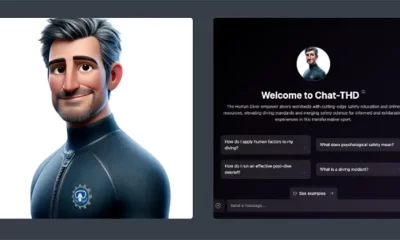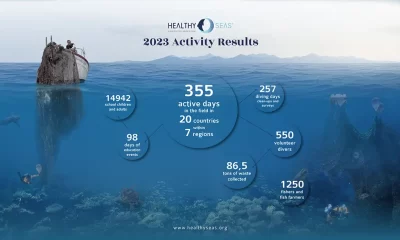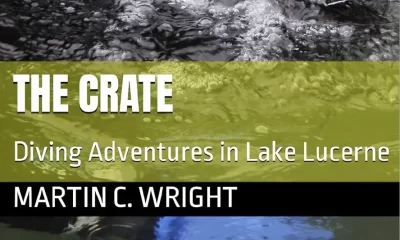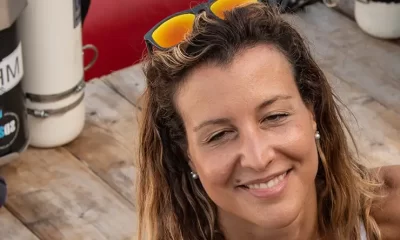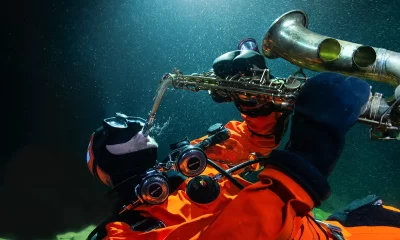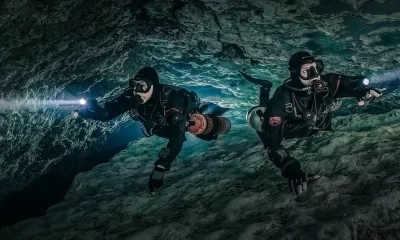Equipment
Professor achieves an underwater first – ‘camping’
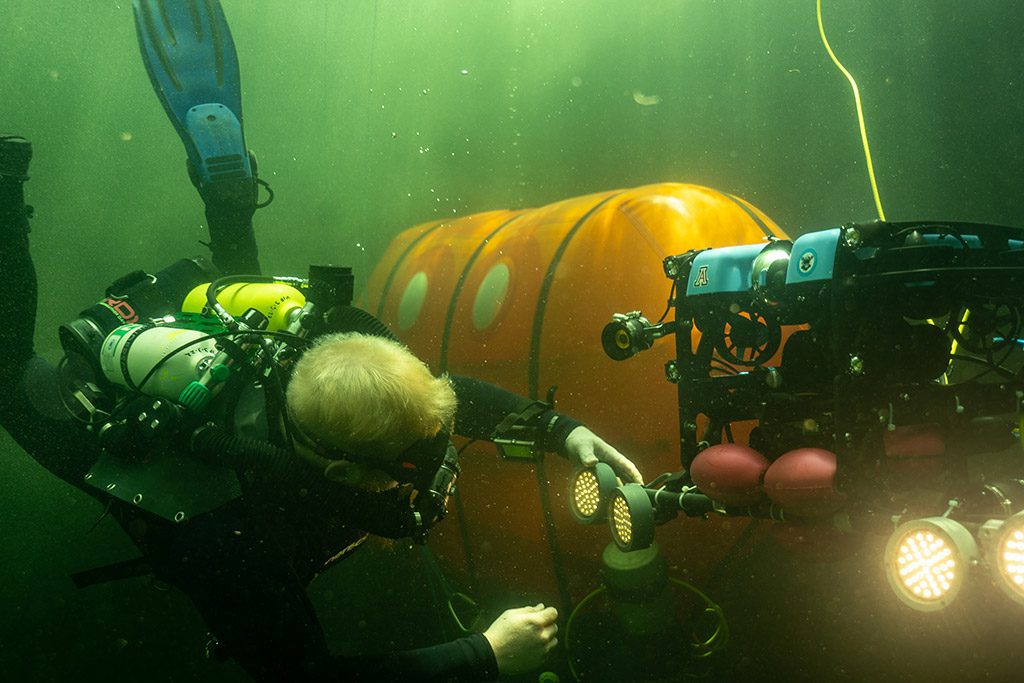
New diving science initiative brings blue economy innovation from the Ocean State to the Arizona desert’s Biosphere 2 University of Arizona Professor achieves an underwater first – ‘camping’
PRESS RELEASE
May 8, 2023
Providence, RI & Tucson, AZ
A May 2023 diving science and technology exercise successfully demonstrated the concept of an ‘underwater camping trip’.
The project took place within the University of Arizona’s Biosphere 2 facility, which is best known for its enclosed environments for earth science research, as well as studying human performance within such environments. The Biosphere 2 recently celebrated the recent accomplishment of enabling terrestrial Mars simulations at the Biosphere.
Within the Biosphere is an ‘ocean’, which for three years has been utilized as a testbed to advance lightweight, portable underwater tent technology. The technology’s co-inventors, Michael Lombardi of Lombardi Undersea LLC (Rhode Island), and Dr. Winslow Burleson of the University of Arizona were awarded a patent for the technology in 2018 entitled “Portable Inflatable Habitat with Modular Payload, System and Method”. The patent was licensed to Subsalve USA, also of Rhode Island, the leader in engineered inflatables for underwater applications who supplies commercial and defense customers worldwide. Subsalve Founder & Chief Growth Officer Rick Fryburg commented, “We are very proud to contribute our 40 years of manufacturing expertise within the subsea inflatable space to making these important scientific advances.”
The ‘tent’, or habitat, provides a relatively dry and protected space underwater for divers to enter, remove their equipment, and carry out any number of tasks before returning to the surface. Michael Lombardi commented, “Underwater habitation and the quest to live beneath the sea has been a dream for over half a century, though is met with very complex challenges – the reality of human physiology and expense make it a difficult proposition. Techniques in saturation diving, where humans live under pressure for weeks or longer, are well established and used in the offshore oil and gas industries via mobile diving saturation vessels. By contrast, marine science has sporadically made use of fixed permanent habitats resting on the seafloor. Both rely on high operational costs and heavy infrastructure. In the last 20 years, techniques in ‘technical diving’, typically for sport, have made dive excursions in excess of 5 hours using only personal life support fairly routine. We’ve leveraged technology and techniques from that sector to afford a new lightweight mode of intervention, akin to camping, where we’ve demonstrated these 5 hours can be extended to a day or more all without the massive infrastructure of the current paradigm”.
During the recent tests at Biosphere 2, the Ocean Space Habitat® system was deployed by a small team, then ProfessorWin Burleson entered the habitat using life support carried independently, and spent an overnight. Total cumulative time spent underwater by Burleson along with safety divers was 26 person hours. He stated, “I was able to get comfortable enough to sleep through the night and be reliant on the ultra portable self-contained life systems engineered for the habitat. This capability results in orders of magnitude less expense than conventional fixed habitats and saturation diving, and exposes a new cross section in human intervention that might make advances in marine sciences possible”.
In today’s marine science paradigm, researchers require being mobile, visiting multiple sites, even within a single field mission. Lombardi went on to state, “…the underwater value is analogous to a backpacking excursion – we certainly learn more from an overnight in the environment than a short walk [scuba] in the park. When coupling our portable habitat technology with modern rebreather (gas recycling) apparatus, spending up to a few days underwater is well within reach. Within this model, an environment can be responsibly studied, but not beat up and destroyed by heavy dive traffic over lengthy periods of time which has been the case with previous permanent stations.”
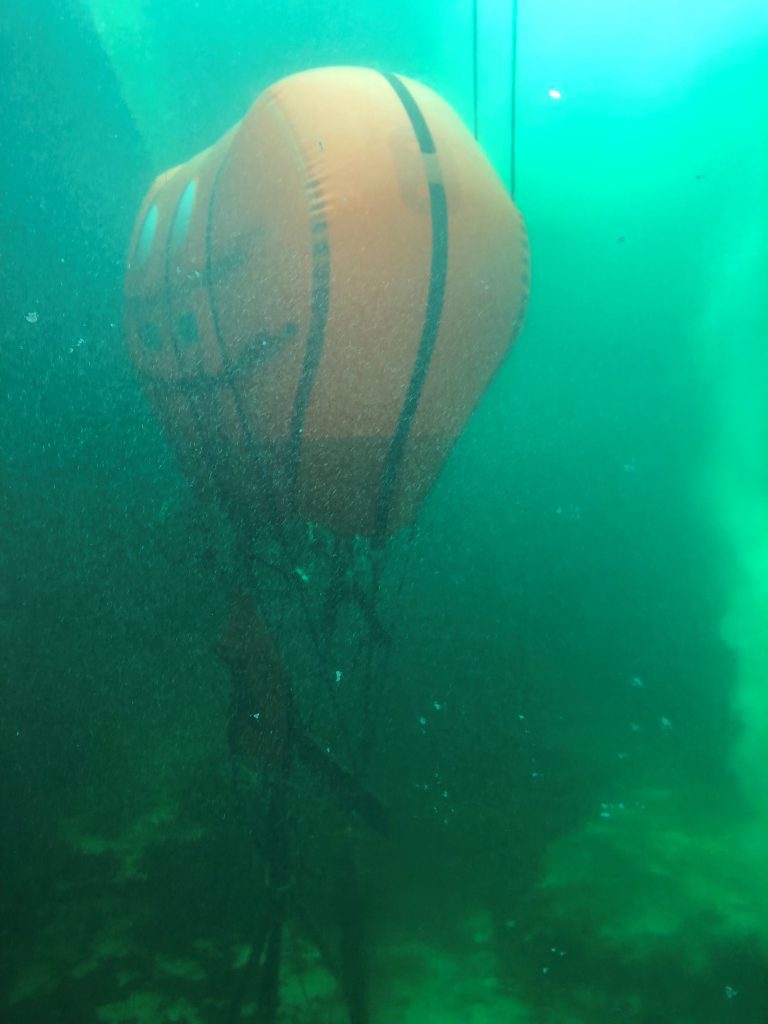
During the recent Biosphere 2 mission, Northeastern University’s Ocean Genome Legacy (OGL) partnered with the project. Burleson and Lombardi collected marine organism tissue samples which have been isolated within Biosphere 2’s ‘ocean’ for 30 years, and processed them within the Ocean Space Habitat® to demonstrate use as a viable science station. Genomic libraries will be constructed by the OGL and maintained in repository such that researchers not having access to the Biosphere’s ocean may still study its novel biodiversity. Lombardi shared, “there are numerous very challenging ocean environments that are far from fully understood, and the reality is that accessing them requires considerable specialization. Our team has been developing these capabilities since the early 2000s, initially within the now defunct NOAA Undersea Research Program (NURP) framework and now also privately, and we’re now ready to meet the call for unlocking the ocean’s many secrets in ways that robotic intervention cannot. A core team of ‘Aquanauts’ can be trained and mobilized using our habitat systems along with associated technology and techniques to afford science with dexterous manipulation [hands], spatial awareness [eyes], and rapid decision making [brain] within these environments.”
Research and development efforts are ongoing.
Related Media
- Lombardi introduces ‘Aquanautics’ at Biosphere 2: https://youtu.be/FbQnQ6q7W5E (part 1)
- Lombardi introduces habitat https://youtu.be/q9o4JEyipy8 (part 2)
- New ‘tent’ makes it possible to camp underwater (nationalgeographic.com)
- Ocean Space Habitat on Discovery’s Shark Week: https://youtu.be/yl7dXexAhjI
- Ocean Space Habitat – Oceans of Opportunity (oceanopportunity.com)
- Ocean Space Habitat | Lombardi Undersea (underseatools.com)
Project Support/Funding
The Ocean Space Habitat® program has benefitted from support from Subsalve USA, New York University, the University of Arizona, Lombardi Undersea LLC, Ocean Opportunity Inc., the National Geographic Society’s Waitt Grants Program, and the Discovery Channel.
Media Contact information
Ocean Opportunity Inc.
[email protected]
+1 401 226 1875
Mikayla Mace Kelley
Science Writer, Communications
THE UNIVERSITY OF ARIZONA
Louise Foucar Marshall Building, Suite 100
845 N. Park Ave. | Tucson, AZ 85719
Office: 520-621-1878 | Cell: 520-433-0526 | [email protected]



















